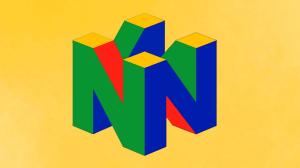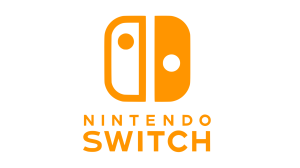Code Vein was easiest described as “Anime Souls” prior to the game’s release, and if you stick with that moniker now that the game’s out, you wouldn’t be off base. It leans heavily on Dark Souls and FromSoftware’s follow-up games, but simply calling it a clone would be a disservice to the way Bandai Namco made the game stand apart from other lookalikes. It takes some liberties to tweak the moody RPG formula in different ways and indeed has its own distinct anime style, but unfortunately some bland enemy encounters and so-so combat prevent it from being a must-play chapter in the Souls genre.
Videos by ComicBook.com
The anime part of Code Vein comes out before the Souls part does. Every character is inexplicably beautiful despite being undead in an apocalyptic setting, and everyone’s anatomy seems like it’s trying to wrestle its way out of their outfits whether it’s their abs or breasts that are trying to escape. Each NPC has their own personal motives you’ll find out about through a revealing memory-divulging mechanic, but the ongoing goal of the undead characters called Revenants (of which you are a part of) is to stay alive by finding special Blood Beads or using the blood of humans, so everyone may as well look their best during their eternal struggle.
You’ll be able to make your character look the best it can as well through one of the most robust character creation systems that’s been seen in a while. Nearly every aspect of a character can be changed with pages of accessories, color palettes that leave no shade or hue undiscovered, and multiple slots to save your creations in after you’ve made different outfits. The last part seems like a small touch, but when you’re changing weapons on the fly, sometimes a hairstyle or outfit just goes better with a massive hammer compared to a slender bayonet.
After spending a few hours creating a character, you’ll settle into the Souls–like gameplay loop. Crush some grotesque and shadowy enemies called the Lost with your weapons and you’ll collect Haze. Use that Haze for everything from upgrading weapons to leveling up. Mistles found throughout the levels server as check points where you can learn new abilities, level up, and teleport while refilling your health-regenerating resource. If you die, you’ll have the chance to find your Haze again, but a second death without collecting your lost Haze causes it to disappear forever. Sound familiar?

With the inevitable Souls comparisons out of the way, Code Vein actually does a lot to separate itself from other similar games. You’ve got a partner to accompany you after you’ve selected your companion from NPCs collected at a home base, and they’re surprisingly helpful. They won’t engage unless you fight or you’ve been engaged on, they’ll keep you alive with last-minute heals, and in some instances, they’ll straight up clear a whole room for you. As long as you’re pulling your weight, they rarely feel like a burden.
The class system in Code Vein is also commendable for finding a solution to the frustrations of being unhappy with a build and gives players a way to try something new without starting over. As a unique Revenant, you can utilize other characters’ blood types once given to you. These blood types act as different classes – there are archetypes like berserker, caster, and assassin just to name a few – and they each have their own skills and stats. Only one blood type can be equipped at a time, but you can change it and the skills you have set at any point without having to return to a Mistle. Master those skills and you’ll be able to use different abilities with different blood types to create your own overpowered combos that compliment your partner.
Since each blood type has its own stats, you aren’t allotting points into specific traits like vitality or dexterity. It’s a simplification of the RPG process that some hardcore players may not appreciate as much, but it’s a helpful respec system neatly packaged into different classes that makes trying new tactics a breeze. You’ll probably still find yourself falling into a class you use in multiple RPGs, but at least there’s the option to try something new if you find something neat and want to give it a swing.
Those weapons feel satisfying enough to use as you weave together buffs, projectiles, and crunchy punishment with weapons that feel like they’ve got some heft, but it’s a shame the enemies themselves aren’t more entertaining to fight. Enemy designs have potential with some of them hulking and beefy while others are nimble like the standard undead dog enemy, but they mostly feel the same when you fight them. Rarely does an enemy require you to change tactics, and the bosses are largely forgettable. They occasionally provide some tense moments where you have to adapt to status effects on the fly – you can’t pause Anime Souls – but encounters in large, open boss fight areas felt too similar.

Where combat falters, exploration shines. Clearing corrupted areas and defeating significant enemies maps out segments of levels to better navigate them, but it’s almost more enjoyable to leave them untouched. A map tracks your path with dotted lines in worlds just begging to be explored with tons of nooks and optional pathways. The loot you’ll find is often just stashed in your inventory to be forgotten, but potential blood type upgrades and the appeal of a shiny new weapon around a corner fuel Code Vein’s exploratory spirit. Heading into the dungeons known as the Depths after finding maps in your travels and helping NPCs scratches that side quest itch while Code Vein’s lack of “go here, do this” direction makes your adventure feel like your own.
The story connecting all these pieces is decent enough. While I’m still working through it and haven’t yet completed the main narrative, the characters and their struggles are compelling enough to keep going and find out what happened to them. Finding lost memories from these Revenants sheds more light on the past that even they themselves have forgotten which deepens your connection to them. The story is more than just one that’s there to string along the action and style even if that’s really what you’re here for.
Code Vein falls short of being a must have, but that doesn’t at all mean it’s a game you should pass on. It’s simplified enough to attract those who felt like Dark Souls and its ilk were too punishing and has enough style to show that not every game like this has to be so grungy and bleak even if the stories have to be serious. Code Vein has its rough patches, but it absolutely accomplishes its mission.
Rating: 4 out of 5
Code Vein is now available for the PlayStation 4, Xbox One, and PC platforms. The game was reviewed on the PlayStation 4 Pro with a review code provided by the publisher. More information on the game can be found through Bandai Namco’s site.








